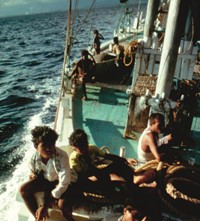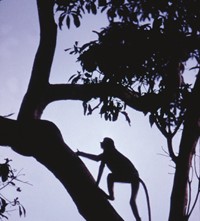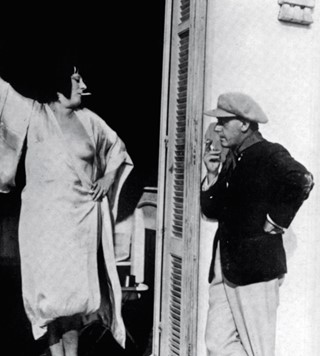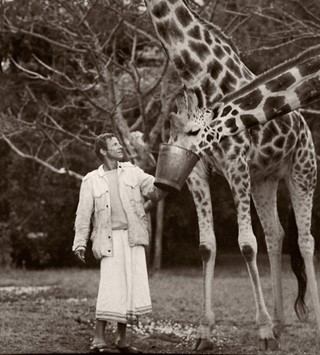How Lawrence Blair Became Bali’s Swashbuckling, Rock’n’Roll Adventurer
- PhotographyDham Srifuengfung
- TextXerxes Cook
Like a cross between Keith Richards and Sir David Attenborough, Dr Lawrence Blair is a swashbuckling, rock’n’roll adventurer on a mystical mission. From his Balinese hideaway, he shares his life lessons from this world and beyond
“Adventure travel has less to do with what’s there to be seen as what we have in us to see. We can travel the globe and see nothing, or wander through our own gardens and be filled with awe by what we’d previously never imagined. For me, Indonesia remains one of the last wild bits of the bottom of the garden of our world” – Dr Lawrence Blair
In the early 1970s, Lawrence Blair and his brother Lorne set off on one of the most audacious adventures of recent times – to follow the steps of Alfred Russel Wallace through many hundreds of the 14,000 islands of the Indonesian archipelago. Like Wallace, who evolved the theory of natural selection independently of Charles Darwin, the British brothers’ expeditions across a nation that covers two million square miles of ocean, amongst lands which harbour still uncategorised varieties of creatures and man, dragons and pirates, healers and headhunters, were also performed without permits, radios, compasses, insurance or emergency supplies.
What had begun as a single trip funded with £2,000 of Ringo Starr’s money to chart the ascension of the last remaining king of Sulawesi’s Toraja tribe back to the stars they believed we descended from on flying saucers, while sailing with the piratical Bugis tribe to film the Aru Islands’ Greater Bird of Paradise, turned into a 19-year “odyssey of self-discovery across the last wild gardens of Earth” – otherwise known as Ring of Fire, the seminal television series which aired on both the BBC and PBS in the early 1990s.
Creating Ring of Fire was an experience in which the brothers became “vulnerable to forgotten times and tribes reawakening with us”, as Lawrence put it in the series’ companion book. Penned with a lyricism that rivals that of Nan Shepherd and Bruce Chatwin, and revealing a lifetime’s worth of near scrapes and revelations that couldn’t be condensed into four hours of film, his might just be the greatest travel book you’ve never read. Though when we told Lawrence that, he replied “anyone can write a book; you should watch the films instead” – which is fair enough considering the effort put into spending months trekking uncharted jungles and free-diving some of the world’s most remote reefs while carrying cameras ludicrously heavy by modern standards, miles of 16mm film stock, and generators to power them all.
Yet, like much of the ways of life, both plant and animal, they captured, little record of the Blair brothers’ expedition remains. While the films can now be found on YouTube, the vast majority of Lawrence’s 14,000 slides melted into a solid, gelatin ball following a fire at the wooden A-frame in the Hollywood Hills he spent some of the 1980s in. The archival images published here are from the few that Lawrence managed to salvage by chipping away at the carbonised lump, their emulsion a result of the LAFD’s fire extinguishers.
Today, Lawrence spends much of his time “interpreting the mystical side” of Indonesia’s islands for the likes of Richard Branson and Mick Jagger. When he’s not at sea, he lives between the house he built with his brother amongst Ubud’s rainforested hills, and a shore-side hideaway where he boogie-boards Bali’s south coast swells every morning. We met him at both to photograph his collection of objects and ephemera, and to hear his thoughts on the psychogeography of the volcanic archipelago in regards to the hemispheres of the Western and Eastern minds.

You’ve mentioned spending years avoiding Bali – what finally drew you to the island?
The reason I had avoided Bali was, of course, because we were adventurers concerned with the most remote peoples. People who had been least affected by globalism, and any island with a high-rise hotel and an international airport we considered beneath our dignity. But I guess I came here for the first time because friends were coming here, and in those days there were very few other foreigners in Indonesia so one would travel vast distances to catch up with them and hear their experiences. When I got to Bali, I remember seeing some hippy walking along the beach and I thought, ‘gosh, this is my place’ – but I wouldn’t put that down. I should be saying: when we came up to Ubud here and made a friend who is the local headman in Pengosekan, the head of this community of artists and painters, I suddenly realised this is an extraordinary place to be human. A place where people are functioning as humans should be, by doing everything rather well.
What does humans functioning ‘as they should be’ mean?
They specialise less. They were both farmers, and they worked with water, they built houses, they painted and they sculpted. And I thought to be able to do all those things with ease and pleasure was a very good way to be a human.
And what were the circumstances that led you to settle in Ubud, in the hills of Bali?
We were never in a position to think of owning a house, anywhere, and we were now given the opportunity to build a house with the local people out of these local materials which smell so delicious; so environmentally friendly. And the whole place is so sensuous, you wear very few clothes – Bali is incredibly comfortable for the human body, for most of the year – and we were in a community of people we could easily sink in with, and contribute to in our way. In the early days we were very short of money, and believe it or not, they supported us. Then, later on, we could support them. So it was a real marriage to a foreign community which I thought was deeply satisfying – and I thought it was satisfying for them too, because we subsequently brought over Batuan, the headman of the village, to lecture in Los Angeles where he met Buckminster Fuller, and they got on incredibly well. When Buckminster Fuller came to Bali and built a geodesic dome here, Batuan was very much a part of all that.
You’ve described life in California as trying to control the environment, whereas to live in Bali is to totally surrender to nature. Buckminster Fuller was interested in creating ‘an operating manual for Spaceship Earth’ – how was he inspired by the Balinese’s relationship to nature?
Going back to America, my television was bombarding me with advertisements to keep nature at bay; netting, poisonous sprays – anything that moved had to be killed. Whereas here you can’t even move into a new house until the spiders and geckos have moved in first. And it is through that surrender you find the balance, which is ultimately much better than the way of will, and in a way those two attitudes reflect the difference between East and West. In my mind, the West is the logical left brain – controlling – and the East is right brain: sensitive, long memory; it surrenders to the forces and moves with them. I was interested in a marriage between the best of the East and the best of the West, which I think was expressed best in this collaboration between Batuan and Bucky Fuller.
You hold a PhD in comparative religion and sacred geometry – what is it that drew you to explore the Indonesian archipelago?
Well, this for a start, was a living example of what is dying out in my own country; a living example of a people whose sensitivities in the right cranial area are still alive. And one of the strengths of being strong in the right brain is that you have access to your genetic memory – to everything you have ever been. Through trance you learn to access the power that is beyond our own limited lives, which stretches back through our ancestors to our earliest beginnings. It’s full of energy, full of power. In the West we don’t believe in the other worlds, in the spirits – unless you are a nuclear physicist, and then of course it’s a very similar description of how the world works. Quantum mechanics tells us that this is all a world of Maya, of illusion. There’s a wonderful expression: ‘Man you are asleep, must you die before you awake?’ We see as real what is unreal, and we cannot see what is. It doesn’t matter if you call it by the name of certain gods, these are actual principles that run through nature and the human psyche, and here they find voice in a way they do not in the West. In the West we find ourselves isolated in a lonely world, whereas here we are fulfilled and cradled in a rich and meaningful and personal universe. It’s all a bit abstract, I know.
Could you give us some examples of these right-brain sensitivities?
In the simplest way, firewalking is a good example. When I first got here, people in Indonesia didn’t believe the West had gone to the moon, and people in the West didn’t believe you could walk on fire without getting burnt. You don’t see it very much now, it’s not done for the tourists or anything like that; it’s done for themselves. There was a university professor in the States who invited his colleagues to come and see him walking on fire, and he had built this fire pit and proceeded to walk on it with bare feet, without getting burned. He then invited everybody else to do it. He explained the physics involved; that the fire had to be hotter than a certain temperature, and then a thin film of vapour forms between the soles of your feet and the fire sufficient enough to prevent you from getting burned, like a drop of water on a skillet. For that to happen, there are two requirements: one is that you are completely surrendered to this process; the other is that you have a high enough water content in your body – and people often drink quite a lot here before they walk on the fire. So there is a subtle relationship between the right brain and the body, in this respect. It’s something to do with allowing these natural instincts within us, which have already been developed over so many millions of years, that they do function in certain extraordinary ways. They do give you premonitions and insights which our logical brains do not understand, and won’t even believe. So, this is the great advantage of coming with a PhD in this mystical area to one of the most living mystical environments on the planet. It was a very rewarding thing to do – it’s like if you’re studying fish, you’ll want to travel to a tropical reef.
So you came out to Indonesia with £2,000 of Ringo Starr’s money, which you’d got by selling him on the idea of sailing with pirates to the Aru Islands where you’d be the first to capture the Greater Bird of Paradise on camera...
And flying saucers…
...the flying saucers who the Toraja people of Sulawesi believe we descended from the stars on. Yet you didn’t have any permits, you overstayed your visa and barely had any emergency supplies – I imagine you must have had some close scrapes along the way?
You know, the moments of greatest danger don’t really scare you as you don’t recognise them as such – you’re in the moment. But when you stop and think about them… One of our greatest dangers was when we were sailing in that Bugis paraw when it was sinking in a storm. Everything was pulling apart, it was taking in a great deal of water, we were way out at sea, our terrifying captain was terrified – all the experienced seamen knew just how dangerous it was. It was also pretty bad when we went to find the dream wanderers of Borneo, because you can only get into Borneo in the rainy season, as that’s when the rivers are full enough so you can get right up to their source. It’s also a time of great floods, and great plagues of creatures, especially insects, escaping those floods; that’s one of the reasons Borneo is so little explored by outsiders – the insects. And sure enough we did get into these floods, and we did risk getting carried away with them. But luck was with us all the way, until of course my brother falls into an open manhole cover in Bali and breaks his leg and dies a couple days later.


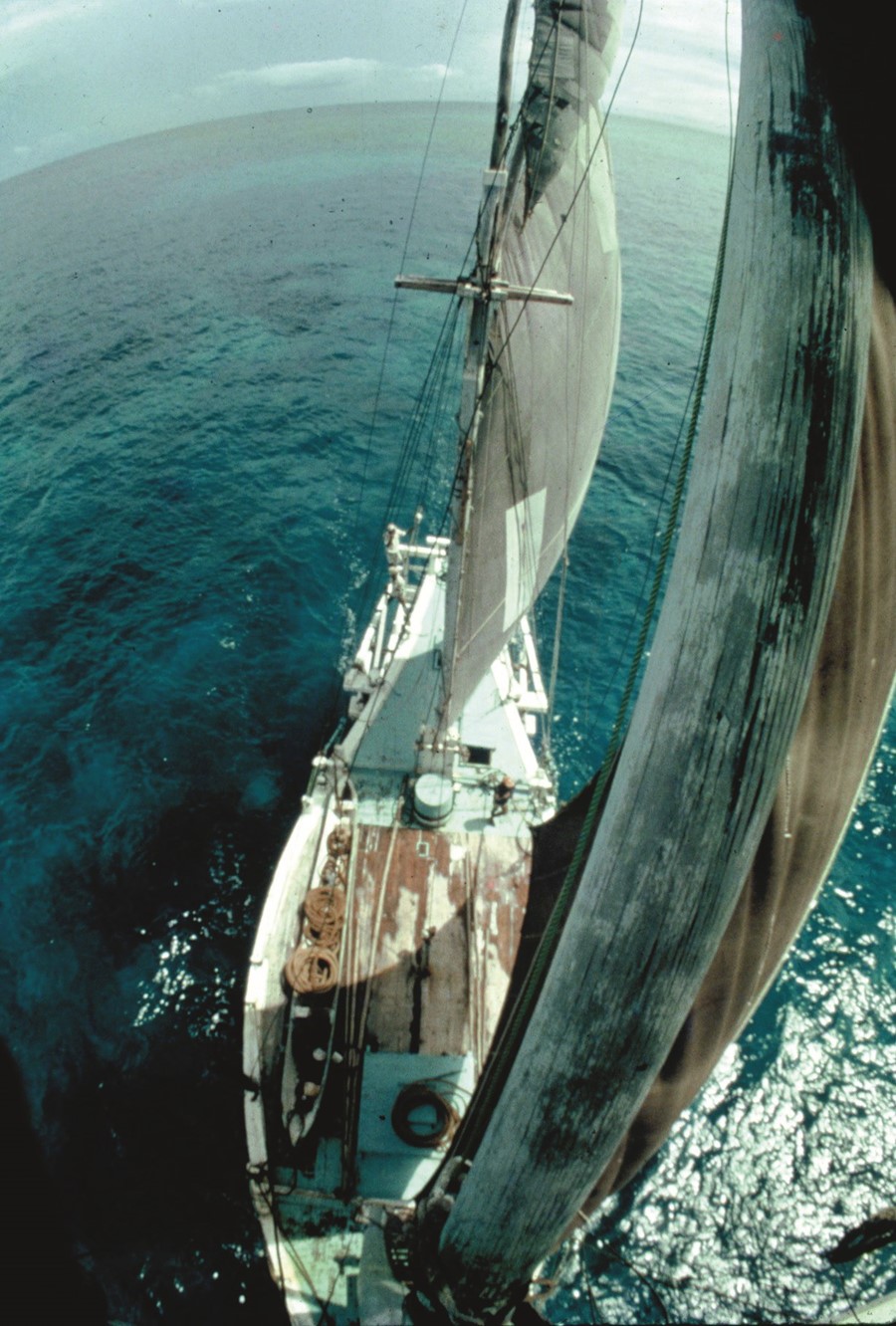
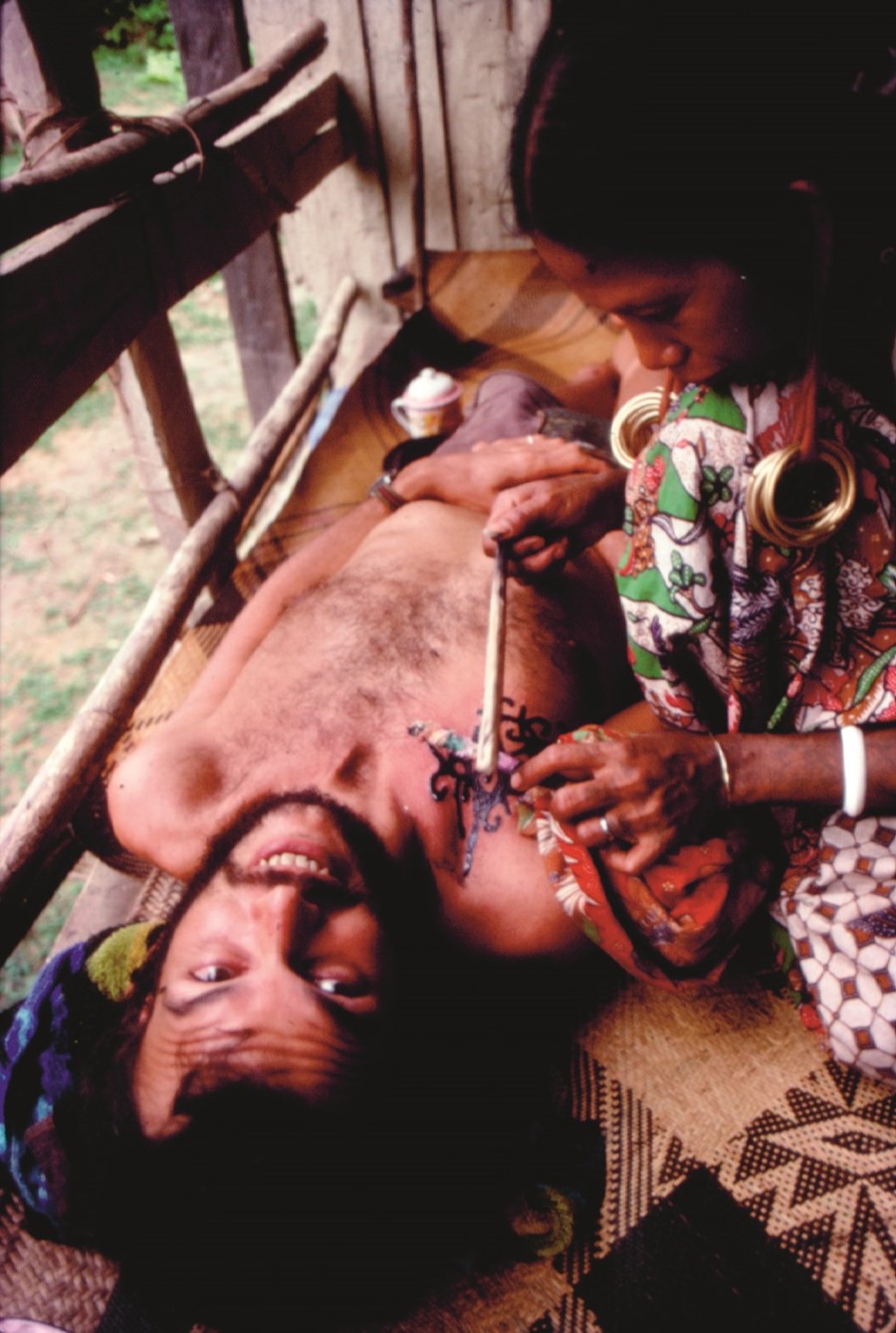
Before we get to that, who are the dream wanderers of Borneo?
With over 200 tribes, Borneo is a really romantic and wonderful place for the great ‘Red Indians’ of Southeast Asia, and the most romantic of the lot I’ve always thought are the Punan Dayaks, as all of the others hunted heads while these guys had a god of love, and they didn’t like having their heads chopped off, or chopping others’ heads off. So they withdrew into the darkest forests far from anywhere, and over millennia they became the experts for gathering specialised animal and vegetable products for the other tribes. So, they were already a bit mystical about what they could find and what they were for, and they were very pale skinned as they never saw the sun – they were in deep forest. Then there was the concept of the ‘dream wanderer’ within them, where they could awaken in sleep and in trance, through a bit of effort and work, this other side of themselves – if you like, the right cranial hemisphere of the brain. It could allow them to wander a field and give them advice when they were at the great crossroads of decision in their lives, as well as helping them navigate through the forest. So they were interesting to anthropologists, especially psycho-anthropologists, insofar as they were psycho-navigators. There are various tribes that qualify as psycho-navigators, such as the Aborigines – but the Aborigines do see the sky; they have the orientation of the stars above them. These guys, the Punan Dayaks, don’t – they seldom see the sky. And so, we set out on an adventure to see if the Punan Dayaks still existed, because academics thought – and definitely the Indonesian and Malay government thought – they were all saluting the flag now, wearing shorts and going to school every day. The only way to find out was to get in there ourselves.
How many days of trekking through the jungle, canoeing up river – and then portering the canoes – did it take to reach the Punan Dayaks?
We covered about 800 miles by canoe and on foot, over three-and-a-half maybe four months, because several times we had gone up hundreds of miles and then broken our motors on semi-submerged logs and had to go all the way back to the coast again. It was a matter of going in and going out, but each time we went back in again we had a clearer idea of where we would most likely find the Punans. And then, when we left the rivers, that was like six weeks of walking and canoeing, with no help – you couldn’t have broken a leg in there, no one could carry you out.
What happened when you finally reached the Punan Dayaks?
We were in fairly bad shape when we met them. We had no more food left, our bearers were wounded, and the Punan nursed us back to health. After a while, rather to our dismay, our guides and bearers left because they had to go back to work their fields. We were like, hold on, how do we get out of here? And they said, ‘Don’t worry, these people will help you find your way back.’ In fact, we were not very far from where months beforehand a missionary group we had contacted said they were going to be building a little airfield. And I remember now, we were hungry, our guides had gone, and hearing the droning of a plane for the first time in months. The rains were there and it was muddy, and they wouldn’t land for three or four days, so we had to keep going back to the Punans on the other side of the river. Eventually, they did land, for the first time on this thing, and they lifted us out to somewhere else, and we went straight down to the coast and back to civilisation. I remember getting out of that aeroplane and falling to the ground – I had been nursing some sickness which I could not afford to give way to, which I now could. I was very sick for about five days, and then up and at it again and all was well. It never ceases to amaze us how we got through and out to the other side of these adventures.
You mentioned your brother’s death earlier – in the book you wrote it left you with the feeling ‘that it is as difficult to postpone one’s time of death as it is to bring it forward’...
I’m often asked about that line. The older I get, the more I feel as if basically life is more set than we realise; that the path of free will is actually a fairly narrow road. You can bounce off both sides of it, but you can’t do that much. I was in and out of hospital when I was very young and I remember going in and out of my body, going back knowing I had seen the broader picture, and the broader picture isn’t going to be changed – that is the broader picture. I think that what we are is already curled up inside us like a little seed of potential. Okay, some people succeed in dying by suicide, others try to and fail. Others try to live and fail, and die. Other people put themselves in great danger and don’t die. It’s kind of the shape of things, especially when I came back with this tattoo of the Tree of Life from the Asmat in West Papua – one of the things I said in the film is that it felt like one was ‘covered’ in some way, and I had a license to play the idiot for a little bit.


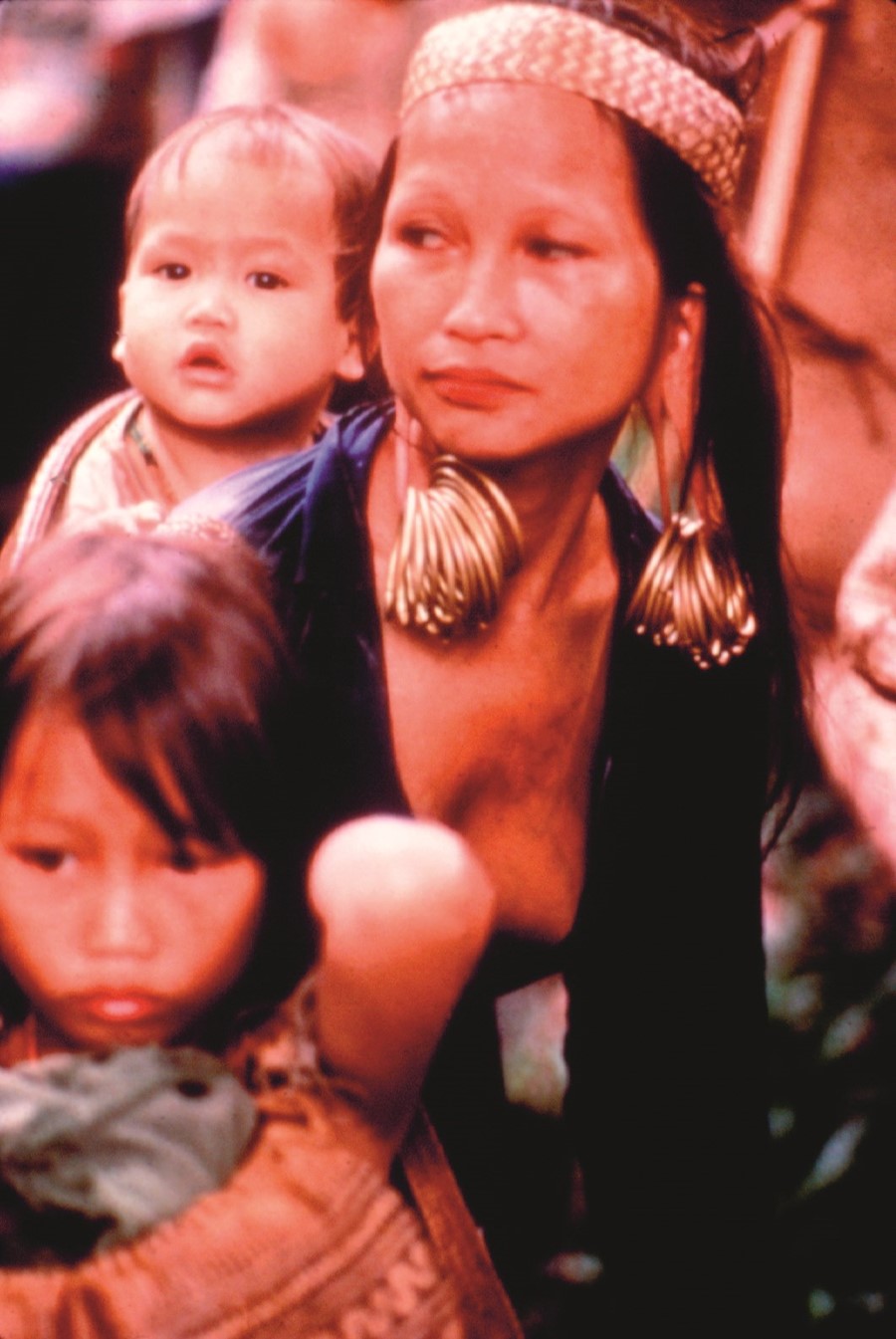

I think you’re just being modest. Can you tell me about the ‘100th Monkey Effect’ theory, which you are credited with coining, as a life lesson?
The 100th Monkey Effect was first published in the foreword to my first book, Rhythms, Visions and the Changing Patterns of Belief. The foreword was written by my much admired, now late friend Lyall Watson who was a scientist who wrote wonderful books in the area of mysticism, rather as I am a mystic who has tried to write a few books approaching on science. He wrote about this situation in Japan where you have these monkeys that on one island eat sweet potatoes, but don’t particularly like the sand. So one group of monkeys on one of the islands learned how to take them down to the sea to wash off the sand, and within a short period of time, monkeys on other islands started doing the same thing. It is part of this theory called morphic resonance – morphogenic fields of resonance – and he came up with it. And you find it in all sorts of other things. For instance, if you teach rats in New York to navigate a particularly difficult maze, rats in laboratories all over the world will suddenly be able to navigate that maze as well. It is the concept of something beneath the rational world which we don’t yet understand affecting the way things grow; you find it in all other kinds of fascinating things.
This seems to touch on ideas of the noosphere and the Jungian common conscious.
Yes, a bit. Teilhard de Chardin, the Jesuit priest postulated the idea of the noosphere, but you could say that is exactly what has happened today with the cloud, and the internet; it is an envelope of thought.
And the Russian geologist Vladimir Vernadsky came up with the idea of the noosphere at exactly the same time as Teilhard de Chardin.
Absolutely – well done. That’s it. And when you get to 100 monkeys washing their thing, that’s enough to somehow boost monkey-consciousness everywhere. Hence the argument for human beings; if there are monks and nuns isolated in their monasteries having nothing to do with the real world, just wanking away in their own religious bubble, they may indeed be affecting everybody’s consciousness. When that book came out it was a big deal, and they flew me everywhere in the States, and I finished up working for the CIA for a month.
What? Hold on – I think I have an idea; did you work on the Psy-Ops programme set-up by Edgar Mitchell, the sixth man on the moon, who had a spiritual revelation of the interconnectedness of life, and on his way back set up this programme that would later recruit Uri Geller to remote view Russian nuclear missiles – which later led to the ‘Men Who Stare at Goats’ of the Iraq War?
That’s right.
So what were you doing for the CIA?
Turn off the recorder…




